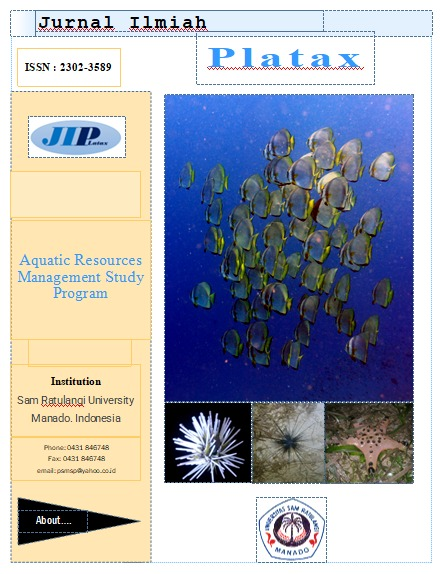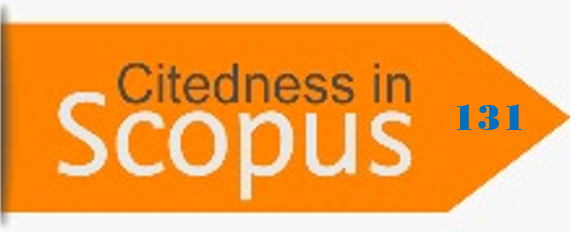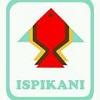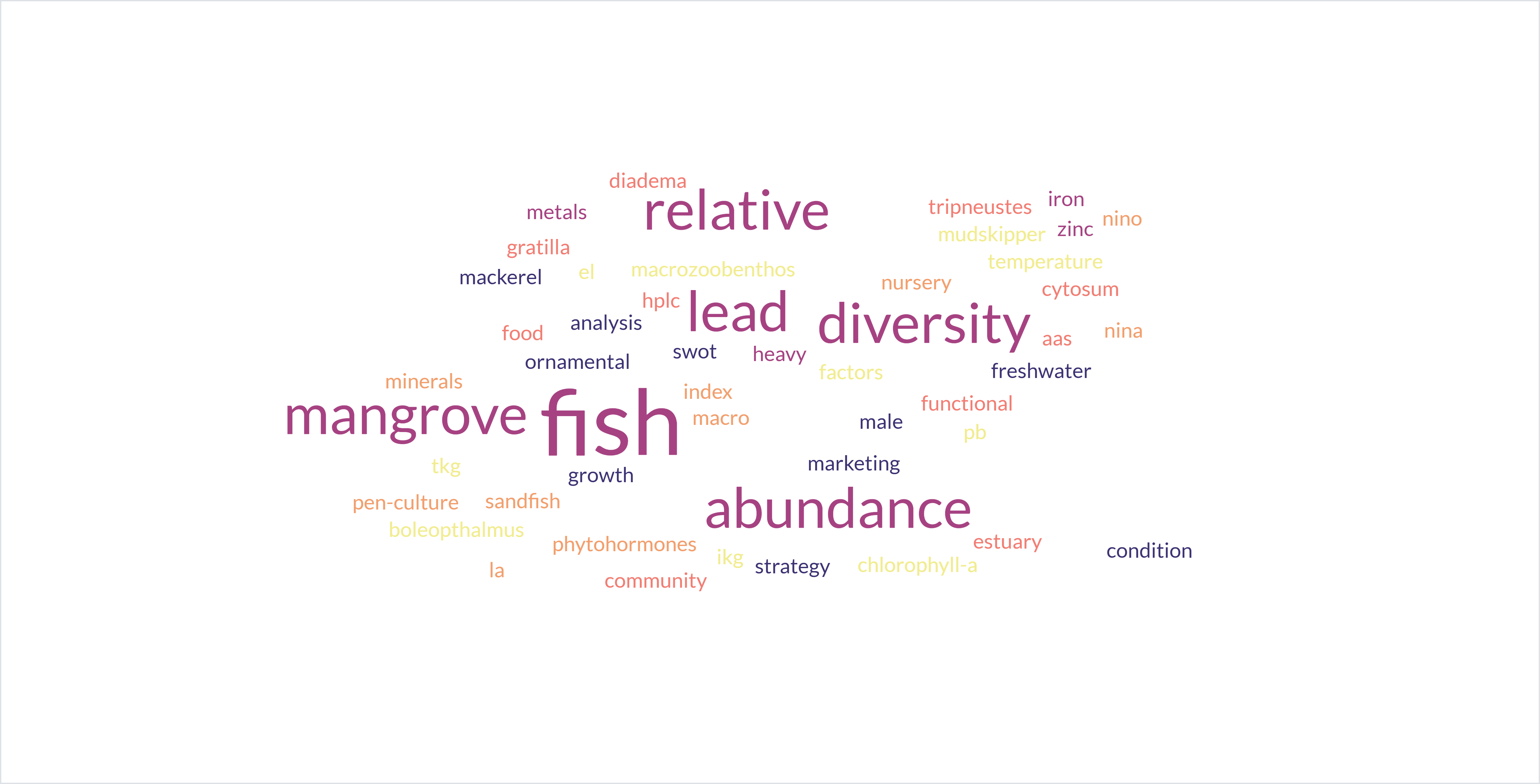Structure of the Seagrass Community, In Poopoh Beach Waters, Tombariri District, Minahasa Regency, North Sulawesi Province
DOI:
https://doi.org/10.35800/jip.v12i1.49599Keywords:
Poopoh Beach;, Seagrass;, Community Structure;Abstract
Seagrass are flowering plants (Angiosperms) that are fully adapted to life immersed in the sea. This plant consists of rhizomes, leaves and roots, (Rhizomes are stems that sink and creep horizontally, leave and flower, and grow roots). It is these rhizomes and roots that hold back the waves and currents on seagrass plants. The purpose of this study was to determine seagrass species, species density, relative density, species frequency, relative frequency, species closure, relative closure, important value index, diversity index, domination index and aquatic environmental conditions. There are 4 species of seagrass found in the waters of Poopoh Beach, namely, Thalassia hemprichii, Enhalus acoroides, Halodule pinifolia, Halophila ovalis. The number of stands of seagrass species in the study area ranged from 53-965 individuals, species density (17.67-321.67) individuals/m2, relative density (3.98-72.61%), frequency (0.045-0.90), relative frequency (3.57-71.42%), species closure (0.41-7.31), relative coverage (1.04-78.12%), seagrass importance value index in Poopoh Beach waters shows that Thalassia hemprchii has the highest importance value index among the other 3 seagrass species namely (212.85%), diversity index (0.97), species dominance index (0.11-0.44%/m²). Environmental conditions in the waters of Poopoh Beach, which has a temperature range of 38°C, a salinity of 35‰, has a substrate of sand, sand mixed with mud, muddy and coral fragments.
Keywords: Poopoh Beach, Seagrass, Community Structure.
Abstrak
Lamun adalah tumbuhan berbunga (Angiospermae) yang sepenuhnya menyesuaikan diri dengan hidup terbenam dalam laut. Tumbuhan ini terdiri dari rhizoma, daun dan akar, (Rhizoma adalah batang yang terbenam dan merayap secara mendatar, berdaun dan berbunga, serta tumbuh akar). Rhizoma dan akar inilah yang menahan hempasan ombak dan arus pada tumbuhan lamun. Tujuan penelitian ini adalah untuk mengetahui jenis-jenis lamun, kerapatan spesies, kerapatan relatif, frekuensi jenis, frekuensi relatif, penutupan jenis, penutupan relatif, indeks nilai penting, indeks keanekaragaman, indeks dominasi dan kondisi lingkungan perairan. Spesies lamun yang ditemukan diperairan Pantai Poopoh berjumlah 4 spesies yaitu, Thalassia hemprichii, Enhalus acoroides, Halodule pinifolia, Halophila ovalis. Jumlah tegakan spesies lamun dilokasi penelitian berkisar dari 53-965 individu, kerapatan spesies (17,67-321,67) individu/m2, kerapatan relatif (3,98-72,61%), frekuensi (0,045-0,90), frekuensi relatif (3,57-71,42%), penutupan jenis (0,41-7,31), penutupan relatif (1,04-78,12%), indeks nilai penting lamun diperairan Pantai Poopoh menunjukkan bahwa Thalassia hemprchii memiliki indeks nilai penting paling tinggi diantara ke 3 spesies lamun lainnya yakni (212,85%), indeks keanekaragaman (0,97), indeks dominasi spesies (0,11-0,44%/m²). Kondisi Lingkungan diperairan Pantai Poopoh yakni mamiliki kisaran suhu 28°C, salinitas 30‰, memiliki substrat pasir, pasir campur lumpur, berlumpur dan patahan karang.
Kata Kunci: Pantai Poopoh, Lamun, Struktur Komunitas.
References
Azkab, M.H. 1999. Pedoman Inventarisasi Lamun. Balitbang Biologi Laut, Puslitbang Oseanologi. 24(1), 1-16 hal.
Azkab, M. H. 2001. Peggunaan Inderaja Pada Padang Lamun. Oseana, 2(6), 9-16 hal.
Azkab, M.H. 2006. Ada Apa Dengan Lamun. Oseana. www.oseanografi.lipi.go.id. 3(1), 45-55 hal.
Dahuri, R. 1996. Pengelolaan Sumber Daya Wilayah Pesisir & Lautan Secara Terpadu. Pradnya Paramita Press, 97940838. 1(5), 350 hal.
Dahuri, R. 2003. Keanekaragaman Hayati Laut : Aset Pembangunan Berkelanjutan Indonesia. Jakarta, Gramedia Pustaka Utama, 979-22-0283-8. 3(3), 412 hal.
Den Hartog, C. 1970. The seagrasses of the world. North Holland Publishing. Amsterdams, 2(2), hal 1-16.
Fahruddin, M. F., Yulianda, Setyobudiandi, I. 2017. Kerapatan & Penutupan Ekosistem Lamun di Pesisir Desa Bahoi, Sulawesi Utara. Jurnal Ilmu dan Teknologi Kelautan Tropis, 9(1): 375 – 383.
Harjadi, B., Miardini, A., Gunawan, A.B., & Boediyono, A. (2010). Analisis Keretanan Tumbuhan Hutan Akibat Perubahan Iklim (Variasi Musim & Cuaca Ekstrim). Laporan Penelitian.
Izuan, M., Viruly, L., Said. T. 2014. Kajian Kerapatan Lamun Terhadap Kepadatan Siput Gonggong (Strombus epidromis) di Pulau Dompak. FIKP. Universitas Maritim Raja Ali Haji.
Kordi K.M.G.H. 2011. Ekosistem Lamun (Seagrass). Rineka Cipta ; Jakarta. 191 hal.
Kuo, J. 2007. New monoecious seagrass of halophilla sulawesii, hydrocharitaceae from indonesian. Journal Aquatic Botany, 8(7), hal. 171-175.
Mahendra, A., & Sancayaningsih, R.P. 2014. Keragaman, Distribusi, & Kelimpahan Jenis Anggota Kelas Echinoidea Dan Holothuroidea Di Pantai Poopoh, Minahasa, Sulawesi Utara. Universitas Gadjah Mada : Yogyakarta. Skripsi. 56 hal.
Manzanaris, M.R., Rondonuwu, A.B., & Pratasik, S. B. (2018). Community Structure And Condition Of Coral Reefs In Poopoh Village Waters, Tombariri District, Minahasa Regency. Jurnal Ilmiah PLATAX, 7(1), 9–18. https://doi.org/10.35800/jip.7.1.2019.21439
McKenzie, L.J. 2008. Seagrass Educators Handbook. Seagrass-watch, Queenisland, Australia, 1-20 hal.
Nyabakken. J.W. 1992. Biologi Laut : Suatu Pendekatan Ekologis. Penerjemah H. Muhammad Eidman dkk. Jakarta, PT. Gramedia Pustaka Utama. 979403018X. 480 hal.
Rahmawati, S., Irawan, A., Supriyadi, I.H., Azkab, M.H. 2017. Panduan Pemantauan Penilaian Kondisi Padang Lamun. Jakarta, COREMAP CTI LIPI, 35 hal.
Pranata, A. Suwastika, I.N. Paserang, A.P. 2018. Jenis-jenis lamun (seagrass) di Kecamatan Tinangkung, Banggai Kepulauan, Sulawesi Tengah. Journal of Socience and Technology, 7(3), hal 349-357.
Romimohtarto, K., & Juwana, S. 2001. Biologi Laut Ilmu Pengetahuan Tentang Biota Laut. Jakarta. Djambatan Press. 9794284009, hal 473-482.
Rondonuwu, A.B., Tombokan, J.L., & Rembet, U.N. (2013). Distribusi & Kelimpahan Ikan Karang Famili Pomacentridae Di Perairan Terumbu Karang Desa Poopoh Kecamatan Tombariri Kabupaten Minahasa. Jurnal Ilmiah PLATAX, 1(2), 87–91. https://doi.org/10.35800/jip.1.2.2013.1250.
Soegianto, A. 1994. Ekologi Kuantitatif & Metode analisis populasi komunitas. Surabaya, Usaha Nasional, 9795100165, 173 hal.
Tuwo A. 2011. Pengelolahan Ekowisata Pesisir & Laut. Pendekatan Ekologi, Sosial-Ekonomi, Kelembagaan, dan Sarana Wilayah, Surabaya : Brilian International.
Wagey, B.T. 2011. Morphometric Analysis of Seagrasses Species in Negros Oriental. Manado. Jurnal Ilmiah Sains. 13(2), hal 94-97.
Wagey, B.T. & Sake W. 2013. Variasi Morfometrik Beberapa Jenis Lamun di Perairan Kelurahan Tongkaina Kecamatan Bunaken. Universitas Sam Ratutalangi Manado. Jurnal Pesisir dan Laut Tropis. 3(1), hal 36-44.
Downloads
Published
How to Cite
Issue
Section
License
Copyright (c) 2023 Riswanto Mamonto, Khiristin Ivone Fisye Kondoy, Adnan Sjaltout Wantasen, Rene Charles Kepel, Silvester Beny Pratasik, Febry Susana Ivone Menajang

This work is licensed under a Creative Commons Attribution-NonCommercial 4.0 International License.
COPYRIGHT
Authors who publish with this journal agree to the following terms:
Authors hold their copyright and grant this journal the privilege of first publication, with the work simultaneously licensed under a Creative Commons Attribution License that permits others to impart the work with an acknowledgment of the work's origin and initial publication by this journal.
Authors can enter into separate or additional contractual arrangements for the non-exclusive distribution of the journal's published version of the work (for example, post it to an institutional repository or publish it in a book), with an acknowledgment of its underlying publication in this journal.
Authors are permitted and encouraged to post their work online (for example, in institutional repositories or on their website) as it can lead to productive exchanges, as well as earlier and greater citation of the published work (See The Effect of Open Access).




















